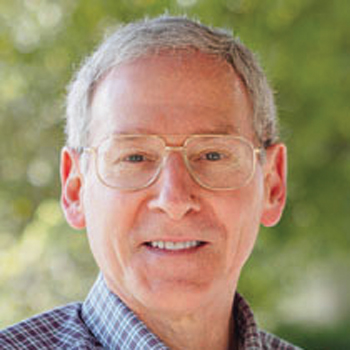Thorner stands as a giant in the golden age of yeast research
Saccharomyces cerevisiae is a species of yeast, a unicellular organism long used by bakers and brewers. As a eukaryotic single-cell microbe, yeast is also a great organism for research. Among the pioneers in studying yeast is , who has increased understanding of signal transduction in several diseases, using yeast as a research model.

— Jeremy Thorner
For his breakthrough research and other contributions to science, Thorner, a professor of biochemistry, biophysics and structural biology at the University of California, Berkeley, has won the 91—«…´¥´√Ω’s 2019 Herbert Tabor Research Award, which honors excellence in biological chemistry and molecular biology and contributions to the community of scientists.
Thorner grew up in Quincy, Massachusetts. He received his Ph.D. in biochemistry from Harvard University in 1972 under the guidance of , studying a model allosteric enzyme, E. coli glycerol kinase. As a postdoctoral fellow under at Stanford University, he studied T4 phage and E. coli DNA replication.
At a Lake Arrowhead Genetics Conference in Los Angeles, Thorner ran into Ira Herskowitz, an acquaintance from graduate school, who was studying mating-type switching in yeast. At Herskowitz’s suggestion, Thorner enrolled in the Cold Spring Harbor yeast genetics course, which led him to establish projects working with yeast in his own lab when he joined the faculty at UC Berkeley in 1974.
Along with an early student, David Julius, Thorner published seminal papers describing the mechanisms by which the peptide mating pheromones of yeast are produced. One of these factors is pheromone precursor prepro-alpha-factor, which is processed to its active form through the secretory pathway. Julius and Thorner discovered Kex2, a prohormone-processing endoprotease whose mammalian orthologs are important in maturation of proinsulin and other bioactive peptides. These discoveries contributed to making recombinant insulin for treating diabetes.
Using yeast, Thorner studied G-protein coupled receptors, or GPCRs, and their downstream signaling cascades. He cloned the first MAP kinase, Kss1, and showed that these kinases are downstream of GPCRs. This work helped illuminate certain pathways that are important in cancer treatment.
of the University of Basel nominated Thorner for the award, calling him “one of the giants of the golden age of yeast research.” Hall wrote in his nomination letter that Thorner “has continually made groundbreaking contributions of great importance to our understanding of hormone action, signal transduction and cellular morphogenesis at the biochemical level.”
Thorner is an outstanding mentor, according to Hall, “with at least seven former Ph.D. students and fifteen postdocs in faculty positions at distinguished universities.” He is also a longtime journal editor who “tirelessly writes lengthy emails to authors to ensure a fair, constructive review process,” Hall wrote.
Enjoy reading 91—«…´¥´√Ω Today?
Become a member to receive the print edition four times a year and the digital edition monthly.
Learn moreGet the latest from 91—«…´¥´√Ω Today
Enter your email address, and we’ll send you a weekly email with recent articles, interviews and more.
Latest in People
People highlights or most popular articles

Hidden strengths of an autistic scientist
Navigating the world of scientific research as an autistic scientist comes with unique challenges —microaggressions, communication hurdles and the constant pressure to conform to social norms, postbaccalaureate student Taylor Stolberg writes.

Richard Silverman to speak at 91—«…´¥´√Ω 2025
Richard Silverman and Melissa Moore are the featured speakers at the 91—«…´¥´√Ω annual meeting to be held April 12-15 in Chicago.

Women’s History Month: Educating and inspiring generations
Through early classroom experiences, undergraduate education and advanced research training, women leaders are shaping a more inclusive and supportive scientific community.

91—«…´¥´√Ω honors Lawrence Tabak with public service award
He will deliver prerecorded remarks at the 2025 91—«…´¥´√Ω Annual Meeting in Chicago.

91—«…´¥´√Ω names 2025 JBC/Tabor Award winners
The six awardees are first authors of outstanding papers published in 2024 in the Journal of Biological Chemistry.

Daniel N. Hebert (1962–2024)
Daniel Hebert’s colleagues remember the passionate glycobiologistscientist, caring mentor and kind friend.

